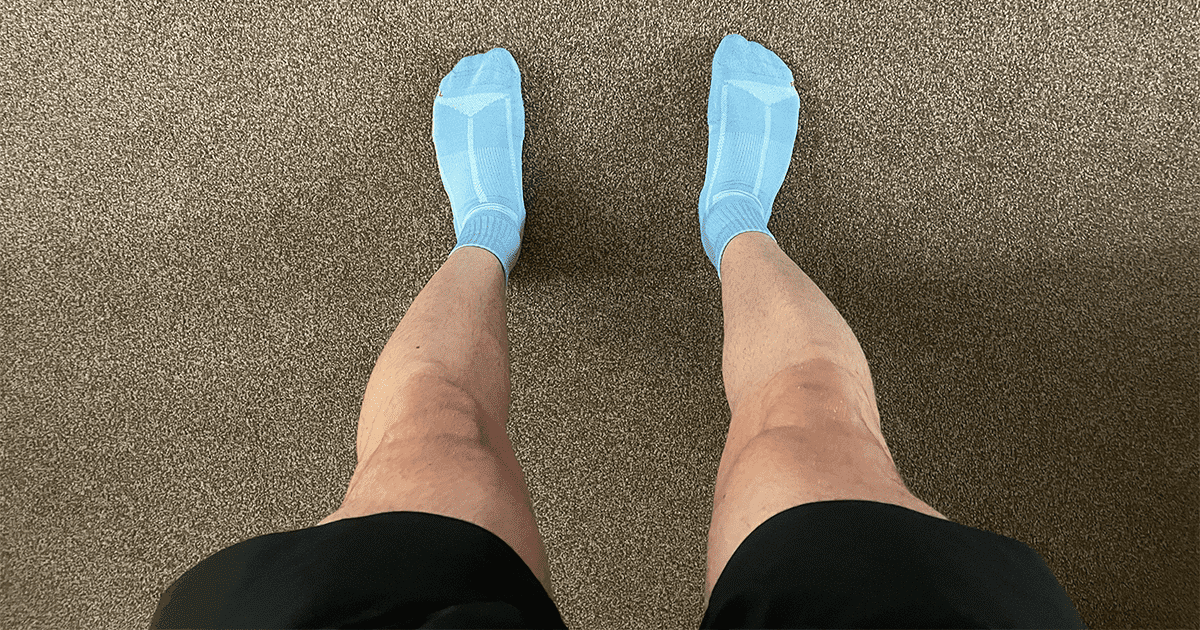Treadmill running: what you need to know
Whether it’s raining outside or you’re looking for a structured speed session, treadmill running is what you’ve been missing.

If you ask any runner, chances are they’ll have something to say about running on the treadmill. Most runners either swear by the slightly monotonous machine or avoid them completely. All for very good reasons, of course.
There are benefits and downsides to running on a treadmill, much like there are caveats to only running on pavements and other hard surfaces; which will be discussed shortly. This article will discuss everything you need to know about treadmill running, from key workouts to hints and tips to make it that little bit more enjoyable.
What are the benefits of running on a treadmill?

While running outside may be greater appealing to most runners, running on the treadmill entails several benefits. These benefits include:
- Having complete control over your run
- It’s easier on the joints
- You can run regardless of the weather
- You can run uphill safely
Each of these bullet points will now be broken down individually and discussed in more detail below.
Complete control over your run
Firstly, running on the treadmill allows you to grasp complete control over your run. For example, you’re able to control the speed, incline, and overall intensity of your run. You can also implement various running workouts into your run in a safe and controlled environment.
Treadmill running is easier on the joints.
Second, treadmill running is much easier on the joints when compared to traditional road or pavement running. This is ideal when returning from injury as a runner, to reduce the additional impact placed on your joints, or to avoid injury completely with less stress placed on your body (best you can anyway).
You can run regardless of the weather
One of the more popular reasons as to why many people run on the treadmill is the ability to run regardless of the weather – rain, snow, or blowing a classic British gale. This allows you to rest assured, knowing you’ll never miss a run while being in complete control of your session at the same time, as previously discussed.
Related: 14 Tips for running in the rain.
You can run uphill safely
The incline feature on a treadmill allows you to run uphill safely, especially when compared to fell or trail running. Treadmill running is excellent for intense hill training without having to worry about your footing or getting lost. Which let’s face it, is an added bonus.
What are the downsides of running on a treadmill?

While there are many benefits to treadmill running (as discussed), there are also some downsides to be wary of. These include:
- Treadmill running does not simulate downhill running
- Treadmill running is boring for many runners
- Incline and speed max out
Treadmill running does not simulate downhill running
While running on the treadmill is great for up-hill training, especially if you live in a city, you’ve probably realised by now that treadmills don’t include a downhill running option… This is a crucial component required in any training program, especially if competing outdoors.
For this reason, we recommend including the occasional outdoor run into your training program if possible, especially if you exclusively plan on training on the treadmill.
Treadmill running is boring for many runners
You were thinking about it, we said it. Treadmill running can be boring. This is especially true when running long-runs or interval sessions. In fact, this is one of the main reasons runners vow not to use a treadmill, and rightfully so.
Tip: Put on some music to make treadmill running more bearable – you’ll thank us later.
Incline and speed max out
While it may not be a problem for most runners, treadmills do max out on both incline and speed. You may find this particularly annoying if doing steep hill sessions or sprint intervals. This is just something to be wary of, however, won’t affect the majority of runners.
Many treadmills also automatically adjust the incline to your workout, such as the Reebok Jet 100 treadmill – allowing you to focus on your run with minimum distractions.
Treadmill running workouts

Chances are if you can run the workout outside you can also run it on the treadmill. Treadmill running is actually pretty popular amongst a selection of runners for its workout and interval session ability.
Before running any treadmill workout, we recommend running a minimum of a 10-minute warmup followed by a 10-minute cool-down at the end of your run.
Recommended: 6 Best treadmill workouts for runners.
The following sections will signpost the different kinds of treadmill workouts, beginning with hill running.
Hill running

Hill running is a particularly popular workout amongst avid treadmill runners. Simply set the incline to your chosen setting, select your speed, and run for a chosen duration. An example hill running workout is as follows:
- 10-minute warmup
- 10×1 minute at chosen incline and speed
- 1-minute rest between each interval
- 5-minute cooldown
Hill running is great for building additional leg strength, alongside improving your cardiovascular fitness thanks to the increased intensity.
Tempo running
Tempo runs can easily be run on the treadmill. A tempo run is run near our lactate threshold, usually for a period of 20-minutes. An example tempo run workout is as follows:
- 10-minute warmup
- 20 minutes at tempo speed
- 10-minute cooldown
Tip: To find your tempo running speed, enter your current race times into the Macmillan pace calculator.
Including a tempo run into your weekly or bi-weekly training schedule will increase your lactate threshold. This allows you to run at faster paces before building up lactic acid and having to slow down. These types of runs are a staple in many training plans and should be included where possible.
Mile repeats

Mile repeats are an all-round great workout whether you’re training for a 5k or a marathon. An example mile repeat workout on a treadmill is as follows:
- 10-minute warmup
- 3×1 mile
- 3-minute recovery between each interval
- 10-minute cooldown
Once again, mile repeats are an extremely versatile treadmill running workout. Mile repeats develop speed and strength for both short and long runs, a staple of any well-written training program.
Treadmill speeds for beginners
If you’re relatively new to running, the treadmill can be an excellent place to build up your fitness in a safe and controlled environment. To begin with, we suggest doing a 30-minute treadmill run:
- 5-minute walking warmup
- 20-minute run at a slow, comfortable pace
- 5-minute walking cooldown
As a beginner, do not be afraid to run at a slow speed or even to walk. It’s better to complete the full 30-minutes than to go out too hard and only complete half of your run. The more sessions you complete, the more you’ll progress – becoming faster and able to run longer each week.
Why do I run slower on a treadmill?
A popular question asked by runners: “Why do I run slower on a treadmill?” You are actually able to run faster on a treadmill due to the decreased wind resistance and the controlled environment you are in. Chances are, you may just think you’re running slower due to the monotonous feel of treadmill running.
Is it better to run on a treadmill or outside?
Running on the treadmill is easier and safer than running outside. This makes it ideal if you’re returning from an injury, or looking to reduce your risk of injury. While treadmill running is easier, this does mean your running pace outdoors will be slower – this is something to keep in mind if you’ve got a race coming up.
We recommend including treadmill running into your training if you’re looking to reduce your risk of injury, are returning from a running injury, or don’t want to miss your run or workout due to adverse weather conditions.
The bottom line
Running on the treadmill deserves a place in every runner’s training arsenal. Whether or not you’re a fan, the treadmill will reduce your risk of injury, grants you complete control over your run, and ensures sure you don’t miss a session regardless of the weather.
We’ve put together a short FAQ below to answer other questions you may have.
Treadmill running FAQ
Is treadmill running good?
Treadmill running is an excellent alternative to road or trail running, especially if the weather isn't looking the best. You can run as far and as fast as you want, in the comfort of your own home and gym. Oh, and you won't get wet.
How long should you run on a treadmill?
This is based on personal preference. However, you can perform all your usual runs and workouts (e.g. tempo runs, interval runs, and long runs) on a treadmill. Therefore, you can run for as little or as short as you'd like.
What speed should I start running on the treadmill?
Ideally, you should start with a brisk walk, gradually building this up to a light jog and then run. This helps warm your muscles up, reducing your risk of injury.
Is it okay to run on the treadmill everyday?
If you're a beginner runner, you likely want to limit your runs to three or four times a week. However, if you're more experienced, the more you run (on the treadmill or not) the better you'll become. Just remember to take at least one, if not two days of rest per week.

Matthew is a lifelong runner, chief tester of all products, the founder of Running101, and freelance content writer for active brands. When he’s not writing, he enjoys lifting weights, cycling in the Lake District, and watching fast cars drive in circles on a Sunday. He also has a BA in sport, exercise and physical activity from the University of Durham.




